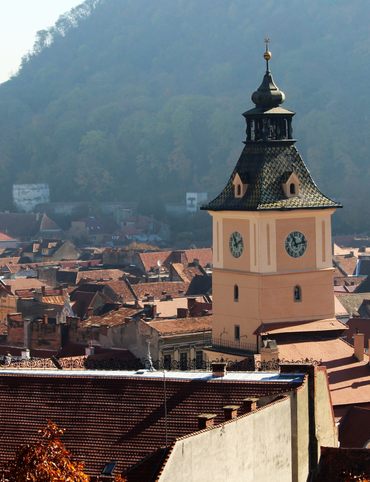

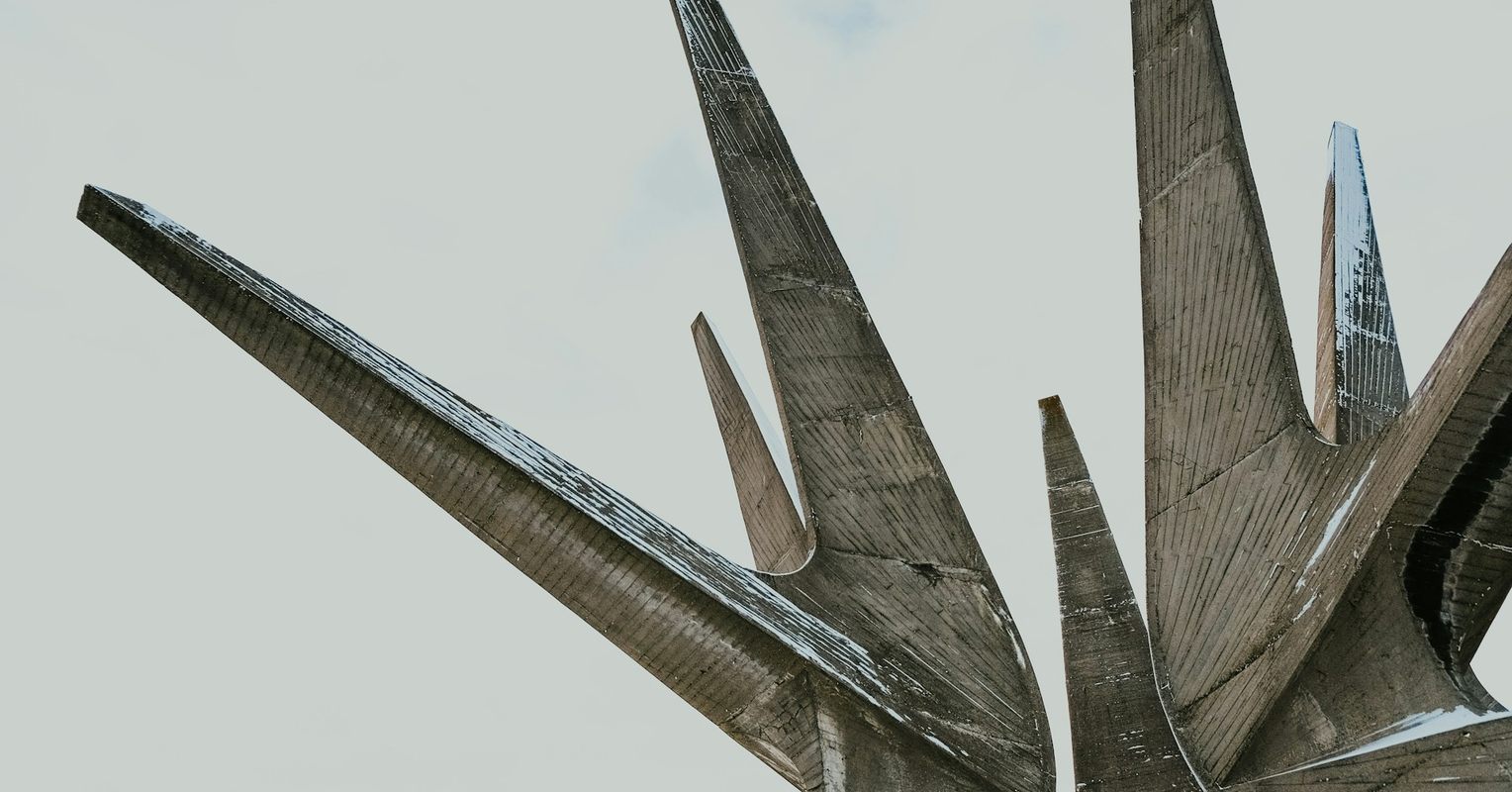
Europe
9 days
8 nights
12 people
Easy
History & Culture

Experience a transformative road trip filled with dramatic history and spectacular scenery as you travel across Serbia, Croatia, and Bosnia and Herzegovina in search of lasting memories of the former Yugoslavia. Visit fortresses and skyscrapers, ruined factories, surreal war memorials known as spomeniks, and extraordinary works of Modernist architecture, and hear from locals about their experiences of the war.
Special Access: Traverse the ruins of Yugoslavia's biggest underground airport.
Travel with Purpose: Support the preservation of local history with a visit to Kadinjača, a striking mountaintop memorial complex honoring those who died resisting Nazi occupation.

Arrive at the Belgrade airport, where a car and driver will be waiting to take you to your hotel in the Old Town area of Belgrade. You’ll meet the group this evening in the hotel lobby – then head out to admire the sights before settling down for a traditional Serbian dinner and an opportunity to get to know your fellow travelers.

Arrive at the Belgrade airport, where a car and driver will be waiting to take you to your hotel in the Old Town area of Belgrade. You’ll meet the group this evening in the hotel lobby – then head out to admire the sights before settling down for a traditional Serbian dinner and an opportunity to get to know your fellow travelers.
Belgrade City Hotel or similar, Belgrade
Welcome Dinner
Belgrade City Hotel or similar, Belgrade
Welcome Dinner

This morning, you’ll set out for a walking tour of Belgrade, taking in sights such as Republic Square and the Kalemegdan Fortress. You’ll get a sense of the city’s diverse architecture, ranging from Serbo-Byzantine through Baroque and Classical, to striking works in the Modernist style. In the afternoon you’ll visit an abandoned factory on the outskirts of Belgrade where you’ll wander through the ruins of a once-thriving site of Yugoslav manufacturing. Finish off the day with a tour of a local brewery and a dinner of modern Serbian cuisine.

This morning, you’ll set out for a walking tour of Belgrade, taking in sights such as Republic Square and the Kalemegdan Fortress. You’ll get a sense of the city’s diverse architecture, ranging from Serbo-Byzantine through Baroque and Classical, to striking works in the Modernist style. In the afternoon you’ll visit an abandoned factory on the outskirts of Belgrade where you’ll wander through the ruins of a once-thriving site of Yugoslav manufacturing. Finish off the day with a tour of a local brewery and a dinner of modern Serbian cuisine.
Belgrade City Hotel or similar, Belgrade
Breakfast, Dinner
Belgrade City Hotel or similar, Belgrade
Breakfast, Dinner
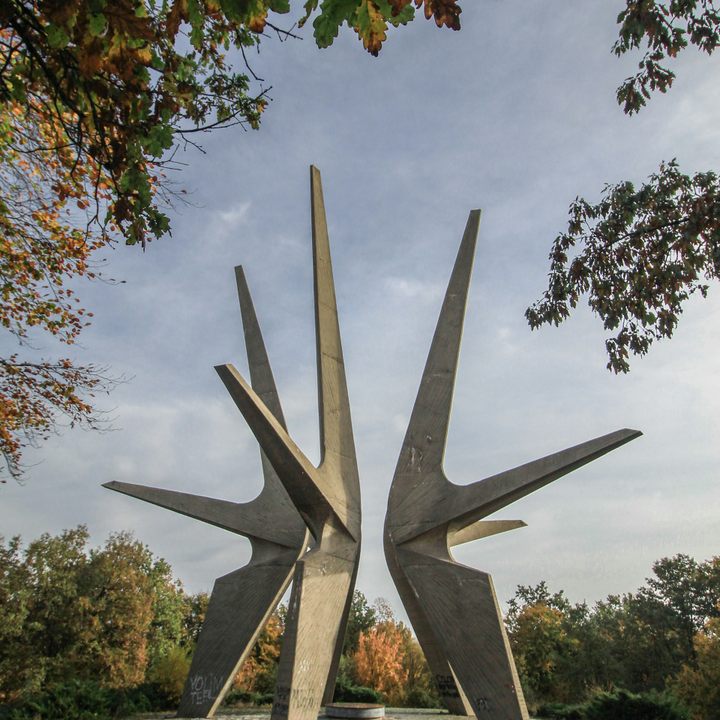
This morning your vehicle will collect you from the hotel and you’ll make your first stop at the partisan monument on Mount Kosmaj. You’ll then drive south west, making a few stops to take in local heritage sites, and to eat lunch against a breathtaking mountain backdrop. Your last stop of the day will be the Kadinjača Memorial Complex, before arriving for dinner, and your accommodation for the night in Užice.

This morning your vehicle will collect you from the hotel and you’ll make your first stop at the partisan monument on Mount Kosmaj. You’ll then drive south west, making a few stops to take in local heritage sites, and to eat lunch against a breathtaking mountain backdrop. Your last stop of the day will be the Kadinjača Memorial Complex, before arriving for dinner, and your accommodation for the night in Užice.
Hotel Aria or similar, Užice
Breakfast, Dinner
Hotel Aria or similar, Užice
Breakfast, Dinner
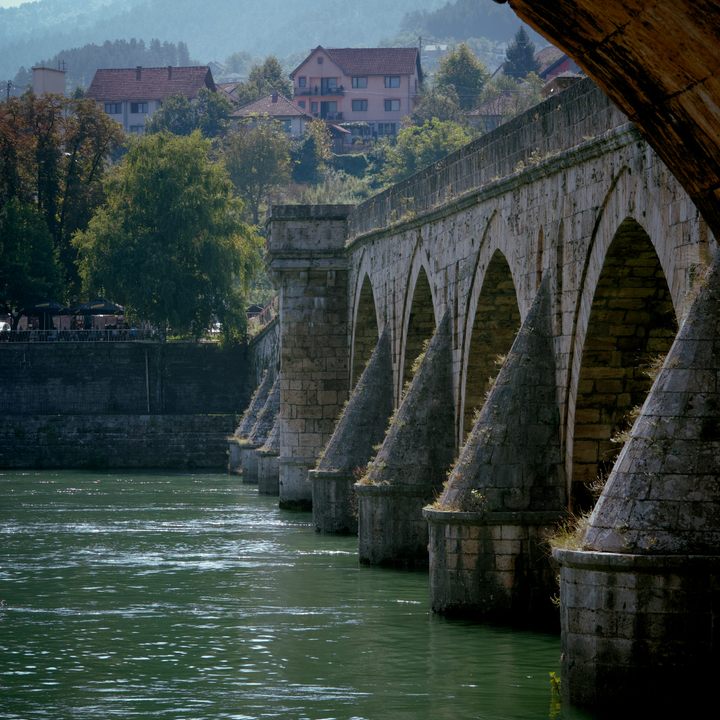
Užice is a paradise for architecture geeks. You’ll take a walk through the city in the morning, admiring some truly remarkable examples of the Brutalist and Modernist styles. Then bid Serbia “Zbogom” as you cross the border into Bosnia and Herzegovina. You’ll visit the extremely picturesque town of Višegrad – made famous by the Ivo Andrić novel, The Bridge on the Drina – before driving to the capital, Sarajevo.

Užice is a paradise for architecture geeks. You’ll take a walk through the city in the morning, admiring some truly remarkable examples of the Brutalist and Modernist styles. Then bid Serbia “Zbogom” as you cross the border into Bosnia and Herzegovina. You’ll visit the extremely picturesque town of Višegrad – made famous by the Ivo Andrić novel, The Bridge on the Drina – before driving to the capital, Sarajevo.
Hotel Halvat or similar, Sarajevo
Breakfast, Dinner
Hotel Halvat or similar, Sarajevo
Breakfast, Dinner
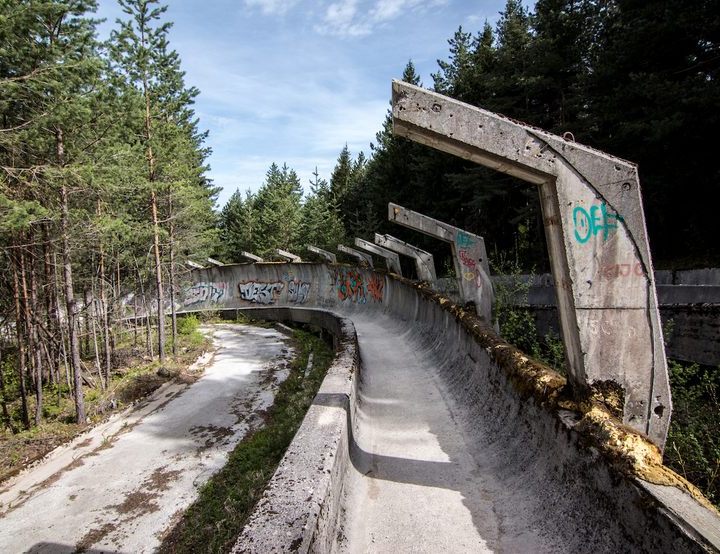
Get your first taste of the Bosnian capital this morning on a guided walk, discovering vibrant art and colorful mosques and learning about the city’s thriving craft beer scene. You'll also have the opportunity to learn about the Bosnian War and the 1992-96 Siege of Sarajevo. Survivors of the conflict will share their stories as you walk around Bascarsija market, and the abandoned Olympic bobsleigh track, which became a front line during the conflict. Check into your boutique hotel with time to freshen up before heading out to dinner at a family-run local restaurant.

Get your first taste of the Bosnian capital this morning on a guided walk, discovering vibrant art and colorful mosques and learning about the city’s thriving craft beer scene. You'll also have the opportunity to learn about the Bosnian War and the 1992-96 Siege of Sarajevo. Survivors of the conflict will share their stories as you walk around Bascarsija market, and the abandoned Olympic bobsleigh track, which became a front line during the conflict. Check into your boutique hotel with time to freshen up before heading out to dinner at a family-run local restaurant.
Hotel Halvat or similar, Sarajevo
Breakfast, Dinner
Hotel Halvat or similar, Sarajevo
Breakfast, Dinner
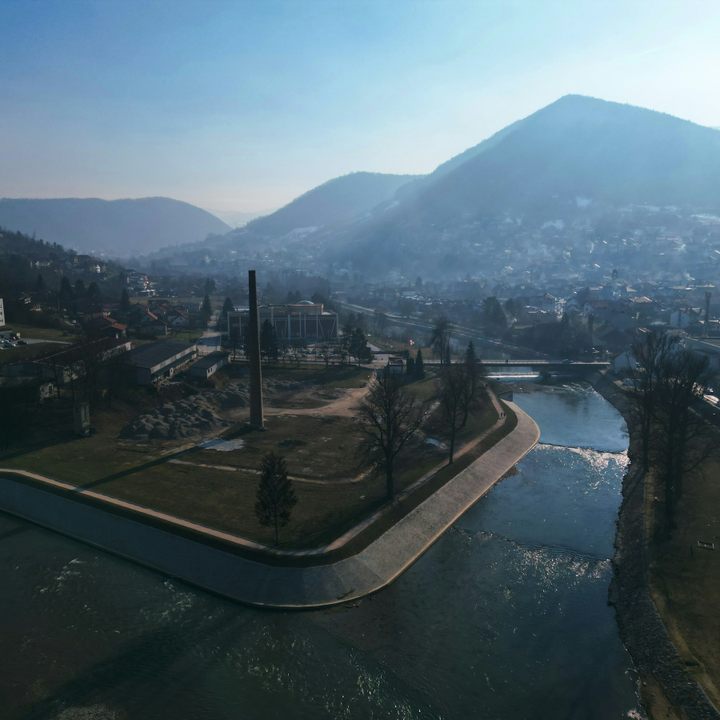
Leaving Sarajevo in the morning, you’ll drive northward. You’ll stop in Visoko to investigate what may - or may not - be a Bosnian pyramid, alleged to be larger and older than the pyramids of Egypt. In the historic city of Zenica, you’ll learn more about Bosnia & Herzegovina’s Islamic heritage during an architectural tour. By late afternoon, you’ll arrive in Banja Luka, the largest city in Bosnia’s 'Republika Srpska' region. Here you’ll take a look around the city center before gathering for dinner in a modern local restaurant.

Leaving Sarajevo in the morning, you’ll drive northward. You’ll stop in Visoko to investigate what may - or may not - be a Bosnian pyramid, alleged to be larger and older than the pyramids of Egypt. In the historic city of Zenica, you’ll learn more about Bosnia & Herzegovina’s Islamic heritage during an architectural tour. By late afternoon, you’ll arrive in Banja Luka, the largest city in Bosnia’s 'Republika Srpska' region. Here you’ll take a look around the city center before gathering for dinner in a modern local restaurant.
Zepter Palace Hotel or similar, Banja Luka
Breakfast, Dinner
Zepter Palace Hotel or similar, Banja Luka
Breakfast, Dinner
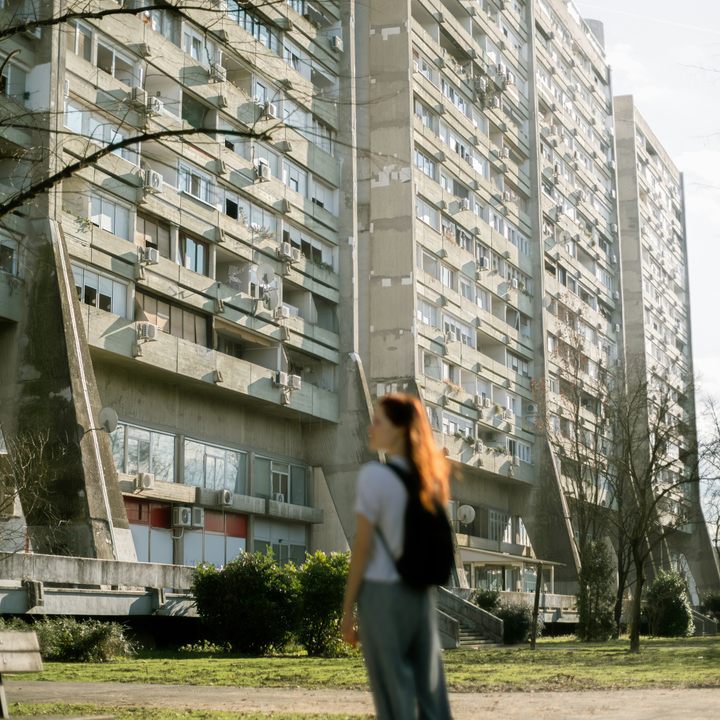
Today you’ll explore the Croatian capital and its Old Town in the company of a local expert, stopping at various unconventional attractions and abandoned buildings around the city. We'll explore the history behand the Zeljava Airbase, once the biggest underground airport in the Balkans lies in ruins. The remainder of the day is yours to relax or explore on your own.

Today you’ll explore the Croatian capital and its Old Town in the company of a local expert, stopping at various unconventional attractions and abandoned buildings around the city. We'll explore the history behand the Zeljava Airbase, once the biggest underground airport in the Balkans lies in ruins. The remainder of the day is yours to relax or explore on your own.
Time Out Heritage Hotel or similar, Zagreb
Breakfast
Time Out Heritage Hotel or similar, Zagreb
Breakfast

Today you’ll enjoy a scenic day trip to the breathtaking Plitvice National Park. The pristine lakes and waterfalls has made this one of Croatia’s most beloved attractions. Expect postcard-perfect views, and a delicious lakeside lunch. Later we’ll make our way back towards Zagreb for our last group dinner together. Along the way though, look out for a surprise stop at what ought to be a very memorable location.

Today you’ll enjoy a scenic day trip to the breathtaking Plitvice National Park. The pristine lakes and waterfalls has made this one of Croatia’s most beloved attractions. Expect postcard-perfect views, and a delicious lakeside lunch. Later we’ll make our way back towards Zagreb for our last group dinner together. Along the way though, look out for a surprise stop at what ought to be a very memorable location.
Time Out Heritage Hotel or similar, Zagreb
Breakfast, Lunch, Dinner
Time Out Heritage Hotel or similar, Zagreb
Breakfast, Lunch, Dinner
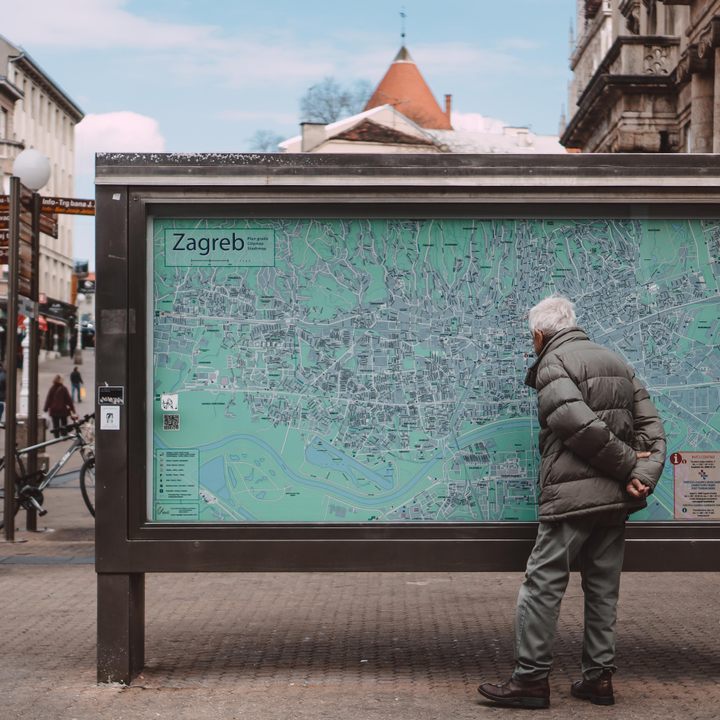
Today’s breakfast will be your last group meal—but the fun doesn’t have to end here. You’ll find plenty more to explore in Zagreb. Check out the Atlas Obscura Guide to Zagreb for inspiration. Until next time!

Today’s breakfast will be your last group meal—but the fun doesn’t have to end here. You’ll find plenty more to explore in Zagreb. Check out the Atlas Obscura Guide to Zagreb for inspiration. Until next time!
Breakfast
Breakfast
Deposit to book your trip: $250 USD.
Balance due 90 days prior to departure.
The listed price of the trip is per person based on double occupancy.
Deposit to book your trip: $250 USD.
Balance due 90 days prior to departure.
The listed price of the trip is per person based on double occupancy.
You’re in good company.
Opt for a Private Room to yourself, subject to availability, for a supplemental cost:
2024 departures: $720 USD per person.
2025 departures: $450 USD per person
Solo travelers typically make up about half of our small groups. With curiosity at the center of our experiences, there’s a natural camaraderie that develops over the course of a trip.
If you don’t opt for a Private Room, you'll be matched with another solo traveler of the same gender.
You’re in good company.
Opt for a Private Room to yourself, subject to availability, for a supplemental cost:
2024 departures: $720 USD per person.
2025 departures: $450 USD per person
Solo travelers typically make up about half of our small groups. With curiosity at the center of our experiences, there’s a natural camaraderie that develops over the course of a trip.
If you don’t opt for a Private Room, you'll be matched with another solo traveler of the same gender.
This trip is not very physically strenuous—just be sure to pack your walking shoes, your flashlight, and your sense of adventure. Be aware that this trip also involves a good amount of driving time, so dress for comfort.
This trip is not very physically strenuous—just be sure to pack your walking shoes, your flashlight, and your sense of adventure. Be aware that this trip also involves a good amount of driving time, so dress for comfort.
You should plan to arrive by 4pm on Day 1, and depart anytime on Day 9. Belgrade International Airport (BEG) connects to a range of flight hubs in Europe. The best flight connections to Belgrade are offered by Air Serbia and British Airways.
*Airport transfers are only provided if arriving & departing on the trip dates, or if pre/post arrangements have been made through Atlas Obscura.
You should plan to arrive by 4pm on Day 1, and depart anytime on Day 9. Belgrade International Airport (BEG) connects to a range of flight hubs in Europe. The best flight connections to Belgrade are offered by Air Serbia and British Airways.
*Airport transfers are only provided if arriving & departing on the trip dates, or if pre/post arrangements have been made through Atlas Obscura.
Check out the Essential Trip Information for this trip or our general FAQs.
Call us at +1 833-919-9154
Send us a
Have a question for us about Balkans Road Trip: Serbia, Croatia & Bosnia and Herzegovina? We're here to help!
Call us at +1 833-919-9154
Check out our FAQ
This site is protected by reCAPTCHA and the Google Privacy Policy and Terms of Service apply.
Have a question for us about Balkans Road Trip: Serbia, Croatia & Bosnia and Herzegovina? We're here to help!
Call us at +1 833-919-9154
Check out our FAQ
This site is protected by reCAPTCHA and the Google Privacy Policy and Terms of Service apply.
Sign up for our emails.
Have a question for us? We're here to help!
Call us at +1 833-919-9154
Check out our FAQ
This site is protected by reCAPTCHA and the Google Privacy Policy and Terms of Service apply.